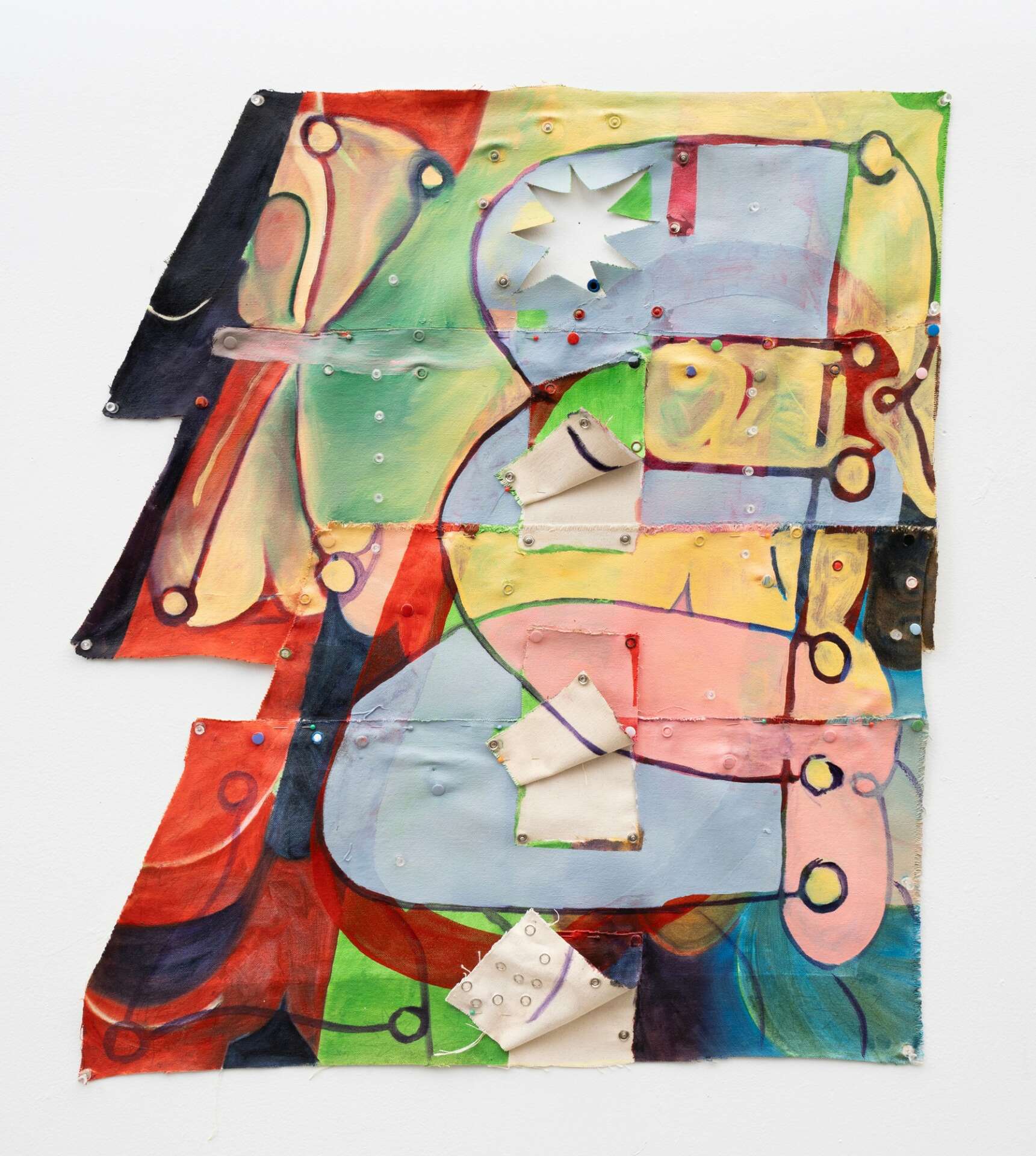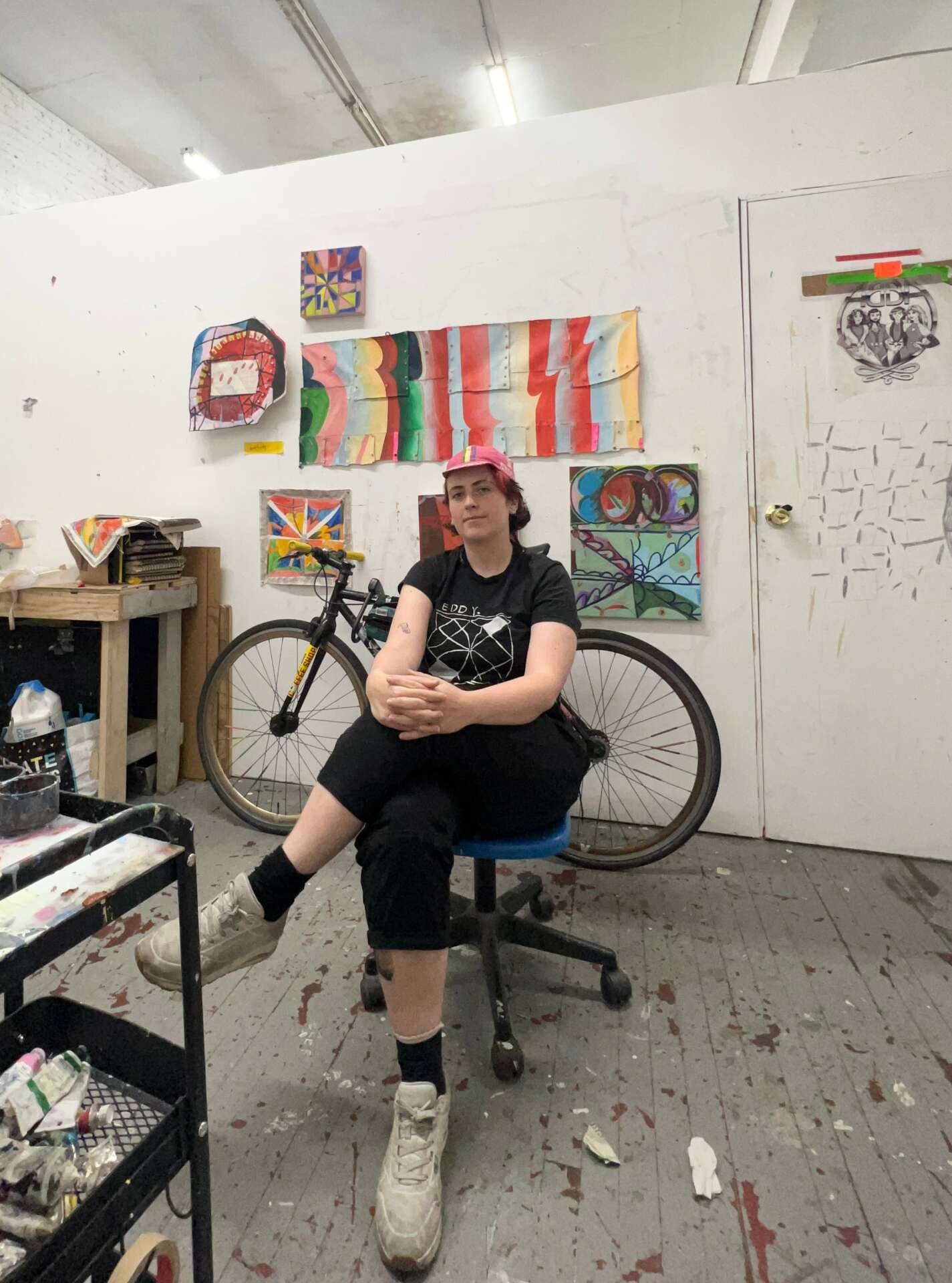We caught up with the brilliant and insightful Kate Sherman a few weeks ago and have shared our conversation below.
Kate, appreciate you joining us today. Learning the craft is often a unique journey from every creative – we’d love to hear about your journey and if knowing what you know now, you would have done anything differently to speed up the learning process.
I first became interested in the language of painting that I do now when I was a sophomore in college. It was in a drawing class, and we were prompted to draw with unorthodox materials. I started cutting pieces of red masking tape into little squares and layering them on top of one another, like a little clay slate roof. I was enamored with how textured this process made the flat drawing paper, and how the outcome existed somewhere between object and picture. Since then, I’ve had a strong intuition to play with layering and shaping materials in my paintings. I don’t think I could have sped up my learning curve as an artist, because it is inextricably linked with my life outside of the studio. Both require consistency and risk-taking, and processing failure. I don’t believe there is any short cut to making work that feels different than where you are in your own life.
Skill-wise, doodling is a very useful tool to me. It enforced the practice of turning the analytical monologue in my head off when I draw, which is how the most intuitive drawings can come to the surface. I think it is important to draw a lot while watching TV, movies, or listening to podcasts. I think that drawing while distracting your brain strengthens the relationship between your hand and your emotions.


Great, appreciate you sharing that with us. Before we ask you to share more of your insights, can you take a moment to introduce yourself and how you got to where you are today to our readers.
I came to painting as a way to process my intense emotions as a child. I found myself in the role of an emotional moderator at times, sensing sometimes that expressing my emotions externally would be inconvenient at best and infuriating at worst. I dove into a drawing and painting practice because it provided me an outlet to explore and take risks, and I could dedicate work to any of the interests I had at the time that were purely mine. I drew portraits of my favorite musicians and thought about their music and how excited I’d be to meet them, even if they had been dead for a long time. I developed an internal mechanism that connected all of my personal interests to an externalization via drawing and painting. It became how I cemented my commitment to those pieces of my identity that were my own to discover, nurture, and daydream about.
As I grew up, this dedication ritual evolved into a practice of problem solving, and the central utility of my work became its ability to keep me thinking about challenging parts of life. I have a deep-seeded aversion to conflict and I require some level of tertiary stimulation in order to think honestly about the roles of my choices and relationships. In searching for this stimulation, I’ve found some resonance in learning about systematic machinery and instances of human error that can cause it to break down. In the engineering of ships, planes, bridges, and buildings exist disciplined geometry and strength. This reminds me of the best of myself and those in my life. These moments of perfection inevitably falter, and sometimes these feats of engineering buckle under miscalculated weight or unpredictable weather. This inevitability of imprecision and mistakes reminds me of tender moments of self-reckoning or communicating with close community. We need to expect and prepare for both extremes.
I now create work that is modular and builds upon itself to keep myself thinking in terms of collective irregularity and the marking of time. I project (paint) familiar gestures onto the surfaces of the work because that’s exactly how my assertion of my own identity projects onto patterns I retain from these shared spaces and observed experiences.


For you, what’s the most rewarding aspect of being a creative?
The most rewarding aspect of my painting practice is the way that it opens up avenues to learn about and commune with other artists. So much of an artists’ personality and singular life force is deposited into their work, and as another artist confronting their work, I have the mental muscles required to pick up on small decisions that might reveal huge truths about who they are, where they came from, and what they’re interested in. Creating art work provides a special third way of developing closeness, wherein the two artists can connect one another’s identities with their practices, and this produces a very deep understanding of someone. I am indebted to this power of making and sharing work among artists, because it has provided me with strong friendships that constantly grow through the curiosity that their work engenders.
What’s a lesson you had to unlearn and what’s the backstory?
I became much happier and more productive in studio once I realized that the pace between evolutions of studio work can be slow. I used to be very judgmental and demanding of myself, which effectively stalled each new idea and sunk them with insecurities. I am now much more aware of this danger, and have dedicated conscious effort to resisting negative thought spirals about the work’s path or its inherent legitimacy or communicated worth. I do my best to consider it with curiosity, as though it is providing me with a strange reflection of myself, refracting off of everything and everyone around me and creating a specific angle of light. I recognize that I only have the tools and skills I have at this moment, and any additional gained will likely be through a clunky era of mediocre practice and experimentation. Shifting my perspective around expectations has kept me much less determined to prove myself in studio, which has ironically provided space for me to surprise myself with joy and pride. It feels like a better pace as well, like a type of emotional regulation around this practice that I’d hope to keep up for the rest of my life.
Contact Info:
- Website: https://www.kate-sherman.net/
- Instagram: scheiermank
Image Credits
Em Joseph


